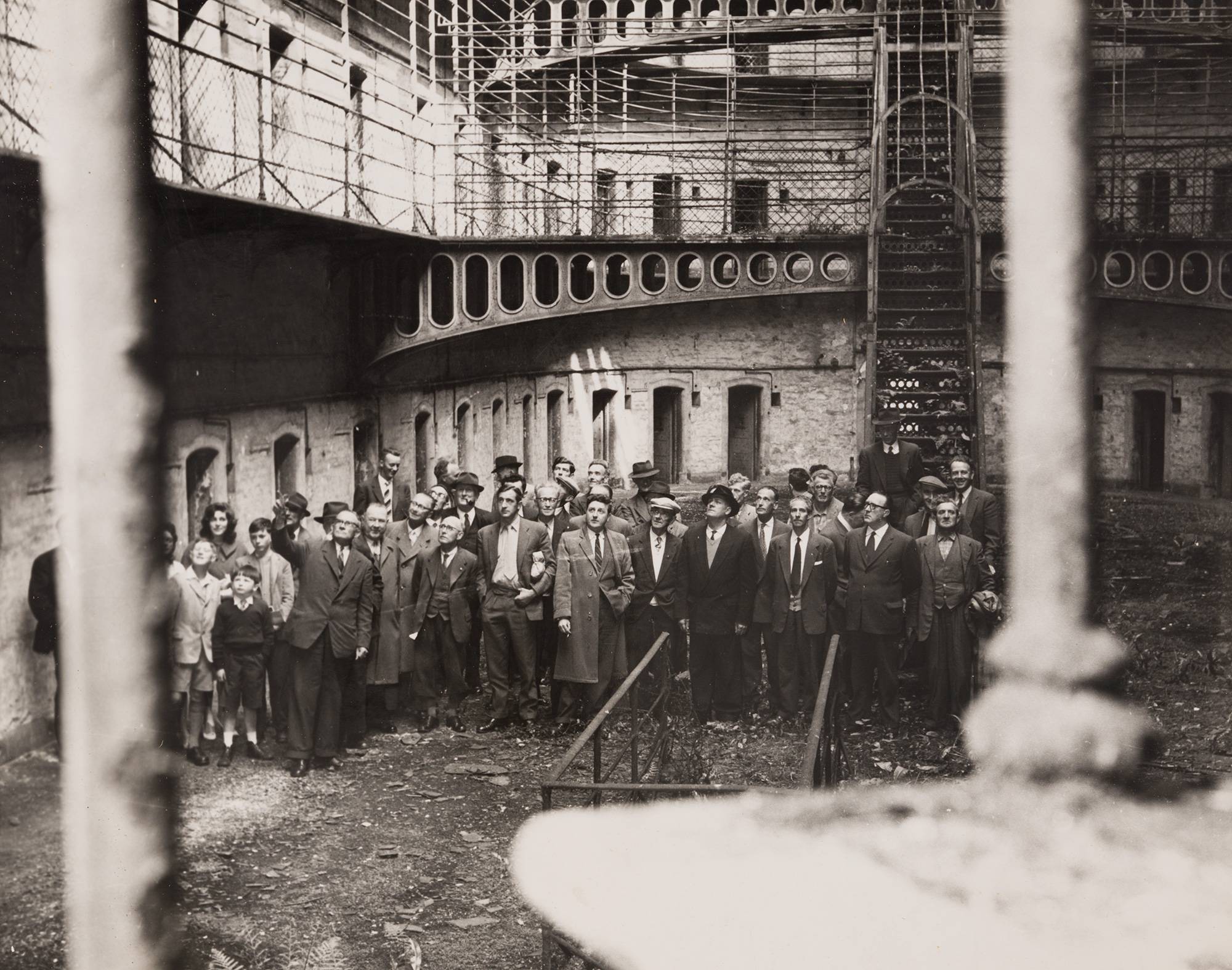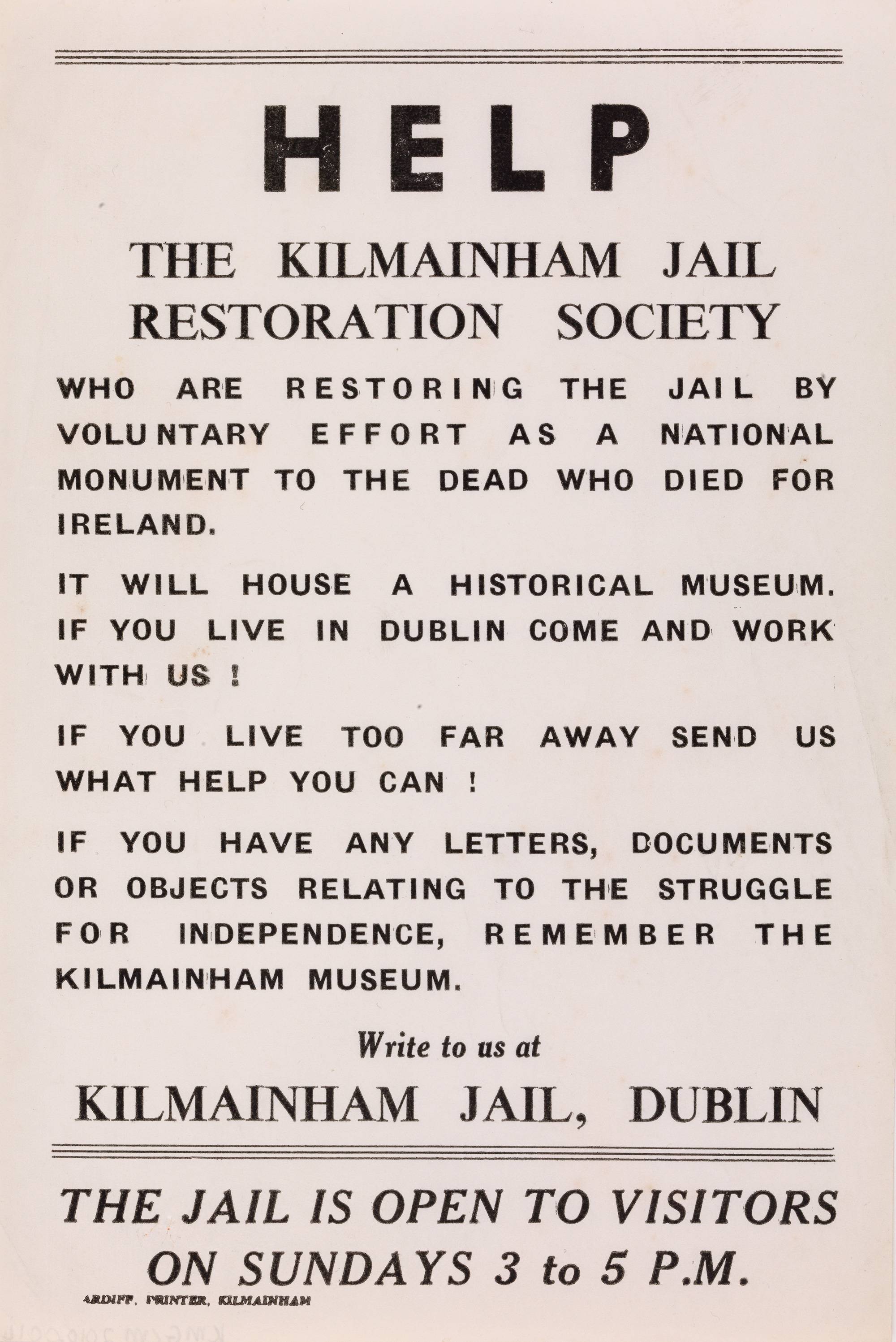Restoration
From time to time after its abandonment in 1924, the issue of what to do with Kilmainham Gaol would arise. The memories of what had happened there made the subject still too raw for some, and successive governments continued to allow it to decline into ruin. As time went on, however, those who had been involved in those turbulent early decades came around to the idea that the role the Gaol had played should be marked, perhaps so those events might not be forgotten. A group, including veterans, came together around 1960 with the goal of restoring the building as a memorial. Their initial motivation was the fiftieth anniversary of the Easter Rising, then six years away in 1966.
I write to you on behalf of myself and Mr PJ Stephenson that you may submit to your Committee or Council, our request for support and/or help in an effort to save Kilmainham Jail from the ravishes of time and the indifference of politicians. It is our intention to get a committee to plan a real campaign to restore Kilmainham Jail and arrange the prison as an Historical Museum, and principally, to elevate that weed-grown, debris-strewn yard of which you are aware, to the most holy spot in Ireland.
They met their goal of making the Gaol a usable space by 1966. In April of that year, the new museum which was now located in the East Wing, was opened by President Éamon de Valera. De Valera had been one of the last prisoners released in 1924, so the moment was particularly poignant.
The work of the Kilmainham Jail Restoration Society did not stop in 1966 however. They spent the next twenty years carrying out an extraordinary amount of voluntary repair work on the building. This included the removal of trees and shrubs which had taken root, the removal of pests, the replacement of broken glass, the removal of rusted ironwork, and the replacement of rotten wood and plaster. Funds to support these efforts came from public donation, government funding, and enterprising ventures involving the Gaol space, such as leasing it as film set. Movies such as The Quare Fellow (1962), The Italian Job (1969), and The Last Remake of Beau Geste (1977) were all partially filmed at the Gaol. They also received huge popular support from tradesmen, having as many as 200 working pro bono on the site at evenings and weekends during the 1960s.
When I say the yards and paths were impassable or blocked I am not exaggerating, the whole open areas to the south, east and north was a jungle. Trees standing twenty to thirty feet high with a dense undergrowth of brambles and thorn bushes from four to five feet high. The condition of the inner yard of the ’98 section of the prison defies description. The external walls of the site running from thirty to forty feet high were festooned with ivy especially along the north, east and south sides, so much so that the actual walls could not be seen.
… Much to the dismay of the pigeons overhead and rats underfoot we set out to first push back the advance of nature and arrest the ravages of time and neglect.
In 1986, Kilmainham Gaol was transferred to state care, under the Office of Public Works. The Kilmainham Jail Restoration Society became the Board of Visitors, and continues to play an important role in the Gaol today, especially through commemorative activities. Since the 1990s particularly, the popularity and reputation of the Gaol have risen enormously, and the Gaol receives over 300,000 visitors a year.In 1996, a new building was added to the Gaol, specifically to house museum artefacts. Kilmainham Gaol has also continued to feature prominently as a film location, with movies such as In The Name of the Father (1993), Michael Collins (1996), The Escapist (2008), and the recent Rebellion drama by RTÉ all shot within the building. Throughout the last three decades, the Gaol has hosted events in keeping with its historical character, for example carefully-chosen plays, operas, and art exhibitions.


